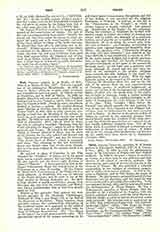

Veith, JOHANN EMANUEL, preacher, b. of Jewish parents at Kuttenplan, Bohemia, 1787; d. at Vienna, November 6, 1876. In 1801 he took the philosophical course at the University of Prague and later studied medicine. In 1808 he obtained a degree in medicine at Vienna; in a short time he was professor and then director of the school of veterinary medicine. He wrote poetry, and a play of his was acted in one of the theatres of Vienna. He also published a valuable compendium in two volumes of veterinary surgery, and an outline of botanical medicine. In 1816 he became a Christian, and in 1817 began the study of theology. He also became a personal friend of Father Hofbauer, was his physician, and was urged by him to devote himself to preaching after ordination. Veith was ordained, August 26, 1821, and the next month joined the Redemptorists at Maria Stiegen. He was a Redemptorist preacher at Maria Stiegen, 1821-30; preacher at the Cathedral of St. Stephen, 1831-45; retired cathedral preacher, until his total blindness, 1845-63; finally, a writer of ascetic devotional works until his death. His sermons exist in manuscript up to 1825; their publication began with “Die Leiclenswerkzeuge Christi” (1826); “Die Worte der Feinde Christi” (1827); “Das Friedensopfer” (1828); “Lebensbilder aus der Passionsgeschichte” (1829); “Das Vater Unser” (1830); “Die heiligen Berge” (1831); “Der verlorne Sohn” (1832); “Die Samaritin”, (1833); “Die Erweckung des Lazarus” (1842); “Mater dolorosa” (1843); “Die Heilung des Blindgeborenen” (1844); “Eucharistia” (1846); “Die Saulen der Kirche” (1847); “Misericordia” (1848); “Politische Passionspredigten” (1849); “Weltleben und Christen-turn” (1850); “Charitas” (1851); “Der Weg, die Wahrheit, und das Leben” (1854); “Prophetie und Glaube” (1855); “Die sechs Fastensonntage nach ihren Kalendernamen” (1857); “Die Perikopen-Reihen der sechs Fastwochen” (1858); “Die Machten des Unheils” (1859); “Die zwolf Stufenpsalmen” (1862); “Die Anfange der Menschenwelt” (1863). Among his homilies are: “Homiletische Vortrage fur die Sonn-und Festtage” (7 vols.); “Homilienkranz fur das katholische Kirchenjahr” (5 vols.); “Vortrage fiber die sonntaglischen Perikopen von Advent bis Pfingsten”. Among his collections of homilies are to be found sermons on the feast days of the ecclesiastical year; he also published sermons of this class in 2 vols.: “Festpredigten, zumeist in einer Doppelreihe”. Of the sermons on special occasions may be named: “Die Cholerapredigt” (1831); and “Austrias Trauer, Drei Reden bei den Exequien fur Kaiser Franz I” (1835).
Veith took pains to give his sermons an attractive and tasteful form; their language is classic. In the third part of his “Erzahlungen und Humoresken” he gives the delightful “Aphorismen fur Diener der Kirche von einem Kirchendiener”. He never made use of the arts of secular orators to create a sensation; least of all did he wish to be a fashionable preacher. Veith’s pulpit was always surrounded by those classes of society which usually do not attend such services. Priests, scholars, literary men, artists, and students came with eagerness to hear him proclaim the Word of God. In the summer of 1869 Veith received an English translation of his “Leidenswerkzeuge” from Theodore Noethen, parish priest at Albany, U.S.A., the work itself being published at Boston. He published three prayerbooks: “Jesus meine Liebe”, “Erkenntnis und Liebe”; “Christus gestern, heute, und ewig”. From 1863 Veith was both blind and deaf. He could not preach any longer but he succeeded in writing lectures on spiritual exercises for publication, and supplemented and completed his books of meditations: “Denkbuchlein von Leiden Christi”; “Erklarender Text zu Fiihrichs 15 Mysterien des Rosenkranzes”; “Meditationen fiber den 118. Psalm”; “Hundert Psalmen”; “Der Leidensweg des Herrn”; “Die Epistelreihe des Kirchenjahres in ihrem Verhaltnisse zu den Evangelien”; also the posthumous work “Koheleth und Hoheslied”. Veith was buried in the Matzleinsdorfer cemetery of Vienna.
COLESTIN WOLFSGRUBER

